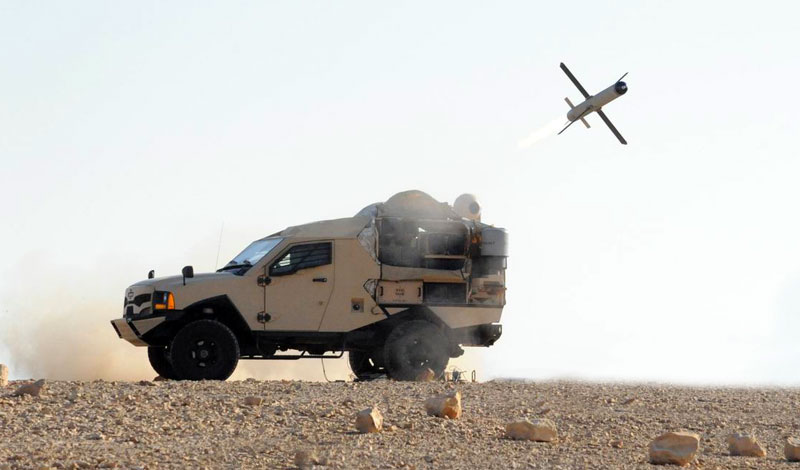
Missiles and Air Defense
Some of the issues discussed between India and Israel are bilateral programs concerning acquisitions for the militaries of both sides. One such program is the development and fielding of Medium Range Surface to Air Missile (MRSAM), an area air-defense system developed initially for naval use, positioned to replace Barak I missile systems in use with the Indian and Israeli navies. The initial contract for the system development was signed between IAI and the DRDO in 2006, followed three years later by another contract for an extended range land-based variant. As a first joint development of an Israeli-Indian weapon system, the missile development was plagued with delays and technical problems, extending development for almost five years. However, by late 2014 the system performed its first end-to-end intercept test on land, demonstrating all elements of the naval and land based system. The team is scheduled to perform the first intercept test at sea this year, and deploy the full system on operational ships (few ships are already equipped with radars, launchers and battle management systems, except the interceptors).
Other successful programs that have gathered momentum in recent years are land-based air-defense systems, such as the Spyder, selected by the Indians for the Quick Reaction Surface to Air (QRSAM), selected in 2009 to protect the mobile elements of the Indian army. The system deploys with four Python 5 and Derby missiles, identical to the weapons already in use with the Indian Navy. RAFAEL is also offering Spyder variants for the Indian Army Short Range SAM (SRSAM), if this program is re-opened for competition.
One of the most promising weapon systems RAFAEL is offering India is the Derby air/air and surface-to-air Beyond Visual Range missiles. While the missiles currently deployed with India’s Spyder and Sea Harriers are the original variant, using an RF seeker developed by IAI, India could eventually buy the enhanced variant, using a newer, compact seeker developed by RAFAEL, which enabled the use of a larger propellant in the same airframe – thus doubling the missiles’ range, positioning the Derby at the same class of the much larger and expensive Meteor.
India was also considered one of the prospective customers for the Israeli Iron Dome Counter Rocket, Artillery and Missile (C-RAM) system. Although New Delhi was less enthusiastic of Iron Dome’s C-RAM applications, RAFAEL believes the Indian military would be attentive to the other systems’ capabilities, including air defense, and naval defense, emerging with the new C-DOME concept, designed as an affordable replacement for BARAK-1 systems, on vessels that are not suitable to get Barak 8.
The IAF that has been using Israeli made laser and EO guided weapons for years, is now opening to diversifying its guided weapons. India has recently agreed to acquire 250 Israeli Spice 1000 missiles, a stand-off autonomous air-to-ground weapon system for fighter jets. Other systems currently in consideration include the Spice 250 weapons and a laser-guided weapon from Elbit Systems. Similar to the Raytheon SDB-II, RAFAEL’s Spice 250 will be displayed in India for the first time at Aero India. It will enable the IAF to quadruple the load out on most of its strike fighters, enabling a Su-30MKI to carry 28 individually targeted weapons, each capable of striking a target with pinpoint accuracy from ranges beyond 100 km. The indigenous Tejas Light Combat Aircraft, currently limited to carry only four guided weapons would be able to deploy 16 Spice 250s, enabling this fighter to strike targets from stand-off range.
The later, smaller, yet highly effective weapon available for use in close air support is the laser-guided rocket. Elbit Systems is positioned to be among the first to pursue this opportunity, providing the Smart Tactical Advanced Rocket (STAR) – a guidance kit similar to the GATR developed for Hydra 2.75” (68/70mm) type weapons – now available also for the Russian S-8 (80mm) rocket.










